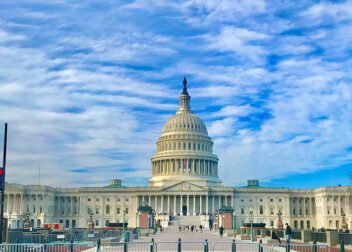Pedestrian Accidents: Understanding the Risks and Finding Solutions
Pedestrian accidents represent a serious and growing concern on roads worldwide. Despite advancements in vehicle safety technology, the number of pedestrians involved in traffic accidents remains alarmingly high. Understanding the risks, causes, and potential solutions for pedestrian accidents is crucial in efforts to reduce injuries and fatalities and create safer urban environments.
The Scope of the Problem
Pedestrian accidents occur when individuals walking or standing near the road are struck by vehicles. These accidents can result in severe injuries or fatalities, with pedestrians being significantly more vulnerable compared to occupants of vehicles. According to the National Highway Traffic Safety Administration (NHTSA), nearly 7,000 pedestrians were killed in the United States in 2021, marking a troubling increase in fatalities compared to previous years. This trend highlights the need for comprehensive strategies to improve pedestrian safety.
Common Causes of Pedestrian Accidents
Several factors contribute to pedestrian accidents, and addressing these issues requires a multifaceted approach:
- Distracted Driving:
- Distracted driving is a major contributor to pedestrian accidents. With the widespread use of smartphones, drivers may be texting, calling, or using apps while behind the wheel. This distraction reduces their awareness of pedestrians, particularly at crosswalks and intersections.
- Speeding:
- Speeding reduces a driver’s ability to stop in time to avoid a collision with a pedestrian. The higher the speed, the greater the impact force and the likelihood of severe injury or death. Speeding is particularly dangerous in urban areas and residential neighborhoods where pedestrians are more likely to be present.
- Poor Visibility:
- Low visibility conditions, such as at night or during inclement weather, increase the risk of pedestrian accidents. Pedestrians wearing dark clothing or lacking reflective gear are harder for drivers to see, making them more vulnerable to being struck.
- Inadequate Infrastructure:
- Many cities and towns have outdated or insufficient pedestrian infrastructure. Lack of crosswalks, poorly marked pedestrian crossings, and inadequate lighting can make it difficult for pedestrians to navigate safely. Roads designed primarily for vehicles often neglect the needs of those on foot.
- Impaired Driving:
- Driving under the influence of alcohol or drugs impairs judgment, reaction time, and motor skills. Impaired drivers are less likely to notice pedestrians and more likely to cause accidents due to their reduced ability to operate a vehicle safely.
- Failure to Yield:
- Drivers often fail to yield the right-of-way to pedestrians at crosswalks or intersections. This disregard for traffic laws can result in dangerous situations where pedestrians are struck while attempting to cross the street.
The Impact of Pedestrian Accidents
Pedestrian accidents have severe consequences for individuals and communities:
- Injury and Fatality Rates:
- Pedestrians who survive accidents may suffer from a range of injuries, including broken bones, head trauma, spinal injuries, and internal organ damage. Fatalities are particularly tragic, as they often result in profound grief for families and communities.
- Emotional and Psychological Effects:
- Pedestrian accidents can have lasting emotional and psychological impacts on both the victims and their families. Survivors may experience post-traumatic stress disorder (PTSD), anxiety, and depression, while families of victims may struggle with grief and loss.
- Economic Costs:
- The economic impact of pedestrian accidents includes medical expenses, rehabilitation costs, lost wages, and legal fees. These financial burdens can be overwhelming for victims and their families. Additionally, there are costs associated with property damage and the broader societal costs of emergency response and healthcare.
Strategies for Improving Pedestrian Safety
Addressing pedestrian safety requires concerted efforts from various stakeholders, including government agencies, urban planners, drivers, and pedestrians themselves. Here are some strategies to improve pedestrian safety:
- Enhancing Road Infrastructure:
- Investing in pedestrian-friendly infrastructure is essential for reducing accidents. This includes creating well-marked crosswalks, installing pedestrian signals, improving street lighting, and developing safe pedestrian pathways. Road diets, which reduce lane widths and slow down traffic, can also make streets safer for pedestrians.
- Implementing Traffic Calming Measures:
- Traffic calming measures, such as speed bumps, traffic circles, and chicanes, can reduce vehicle speeds and enhance pedestrian safety. These measures make roads less conducive to speeding and create safer environments for pedestrians.
- Increasing Law Enforcement and Penalties:
- Enforcing traffic laws related to pedestrian safety is crucial. This includes monitoring and penalizing drivers who fail to yield, speed, or drive under the influence. Increased enforcement and stricter penalties can help deter unsafe driving behaviors.
- Promoting Public Awareness Campaigns:
- Public awareness campaigns can educate drivers and pedestrians about safe practices. Campaigns that highlight the dangers of distracted driving, the importance of using crosswalks, and the need for visibility can help change behavior and reduce accidents.
- Improving Vehicle Safety Technology:
- Advances in vehicle safety technology can contribute to pedestrian protection. Features such as automatic emergency braking, pedestrian detection systems, and collision avoidance technology can help prevent accidents by alerting drivers to the presence of pedestrians and taking action to avoid collisions.
- Encouraging Community Engagement:
- Engaging communities in pedestrian safety initiatives can foster a sense of shared responsibility. Community organizations, local governments, and advocacy groups can work together to identify problem areas, promote safety improvements, and support pedestrian-friendly policies.
- Designing Walkable Communities:
- Urban planning that prioritizes walkability can reduce the risk of pedestrian accidents. Creating mixed-use developments, reducing urban sprawl, and designing neighborhoods that encourage walking and biking can create safer and more accessible environments for pedestrians.
- Supporting Education and Training:
- Providing education and training for both drivers and pedestrians can improve safety. Drivers should be trained to be vigilant and aware of pedestrian zones, while pedestrians should be educated about safe crossing practices and the importance of visibility.
Conclusion
Pedestrian accidents represent a significant challenge to road safety, with a growing number of fatalities and injuries affecting communities worldwide. While advancements in vehicle safety technology have improved protection for drivers and passengers, addressing the risks faced by pedestrians requires a comprehensive approach. By enhancing infrastructure, implementing traffic calming measures, increasing law enforcement, and promoting public awareness, we can work toward creating safer environments for pedestrians and reducing the tragic impact of pedestrian accidents. Collaborative efforts from all sectors of society are essential to make roads safer for everyone, ensuring that pedestrians can navigate their communities without fear of injury or death.


